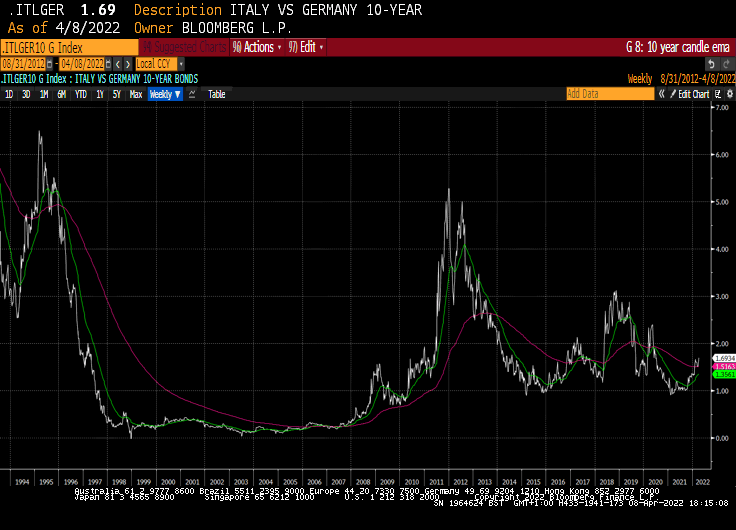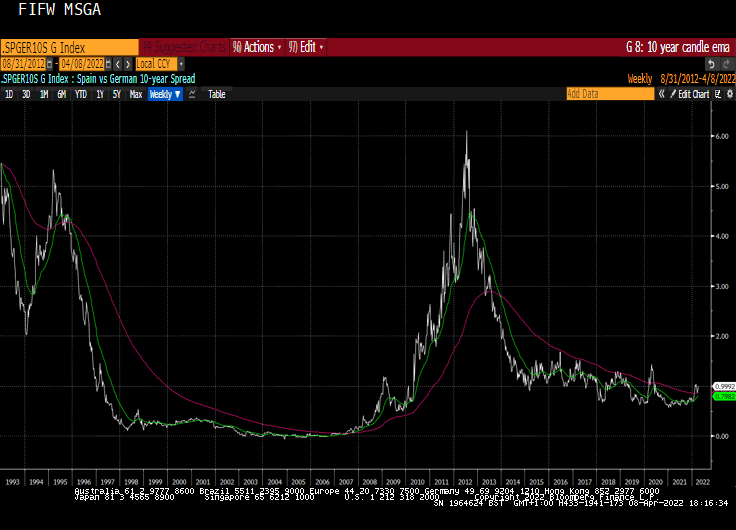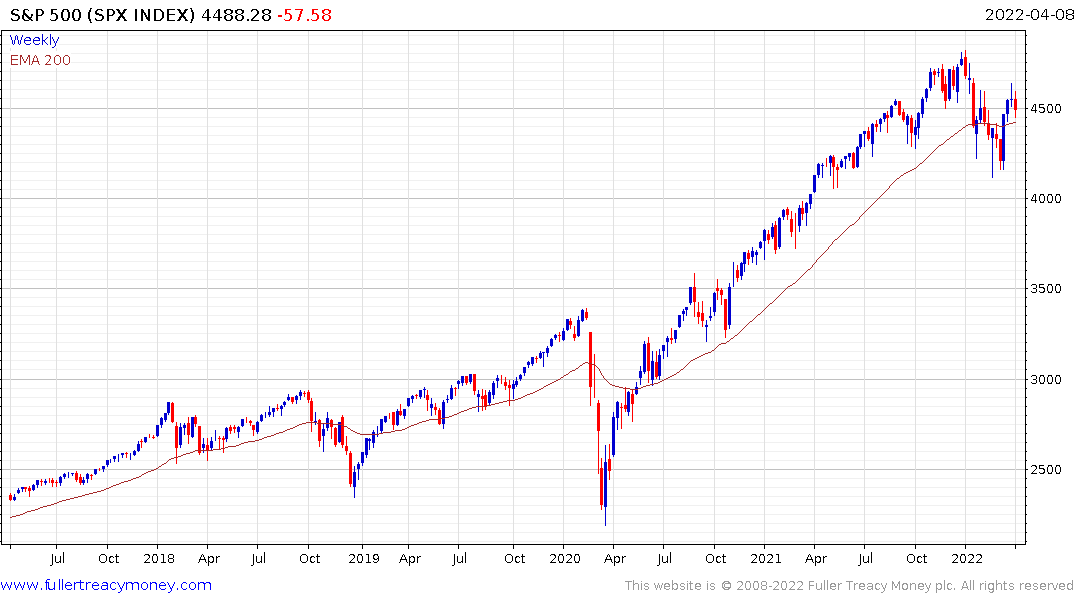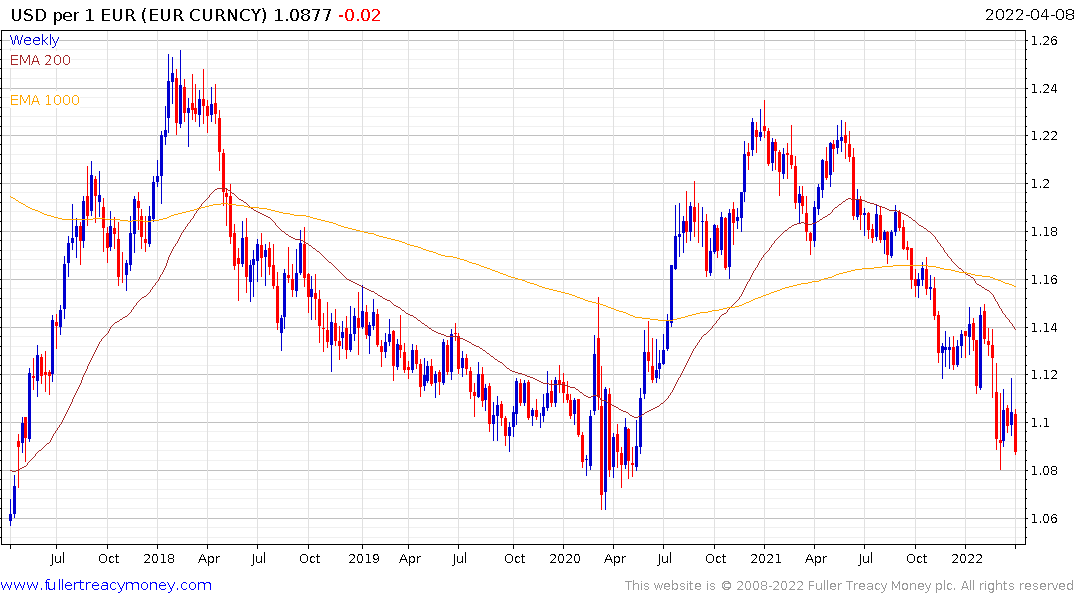ECB Is Crafting a Crisis Tool to Deploy If Bond Yields Jump
This article from Bloomberg may be of interest to subscribers. Here is a section:
The ECB’s behind-the-scenes preparations hint at how officials are bracing for the moment when bond markets will need to cope without large-scale interventions for the first time after more than seven years of nearly uninterrupted asset purchases.
Policy makers stopped emergency bond-buying last month and aim to halt regular quantitative easing in the third quarter.
The creation of a new crisis tool against a relatively benign market backdrop might mark a rare moment of the ECB getting ahead of the game rather than catching up under duress. By contrast, former President Mario Draghi’s OMT measure in 2012 and the Pandemic Emergency Purchase Program in 2020 were unveiled after financial turmoil had engulfed the region.
Already last year, policy makers discussed a precautionary instrument to prepare for so-called fragmentation risks, with officials from the region’s periphery lobbying for an unconditional purchase backstop, while peers from core countries insisted on some strings attached.
The debate was resolved when the Governing Council deemed in December that extra flexibility in reinvesting bonds maturing from its emergency portfolio would be sufficient. But the imminent end of QE and heightened uncertainty about the implications of Russia’s war in Ukraine has reignited concerns among some policy makers.
Financial repression comes in many shapes and forms. At its simplest it means holding down interest rates, so inflation runs hot and reduces the burden of paying back fixed interest debt. When that is accompanied by lower government spending, it can erode debt relative to GDP quite quickly.
The end of outsized spending following World War II and the accompanying fixed yields are a good example of that. The challenge today is yields are rising but spending is still high and likely to grow as baby boomers become an increasingly expensive burden. That suggests bond investors and tax payers are going to carry the burden of servicing that debt.


Stock markets briefly took heart from this news but Italian and Spanish yields continue to rise faster than Bunds. It begs the question at what spread will the ECB intervene? 200 basis points is the upper side of the base for Italian spreads, 150 represents a breakout level for Spanish debt.
The big question for the ECB is what will it do to support Poland as yields climb through 6%? It’s not a Eurozone country but it is experiencing significant stress from the war in Ukraine.
Yield curve control is nothing new in Japan, where the BoJ is defending the 0.25% level on the 10-year but not other portions of the curve. That’s already encouraging a barbell/butterfly trade in JGBs which is only likely to become more pronounced the longer the condition is sustained.


ith Dollar and commodities strengthening in tandem, that is putting a great deal of pressure on other countries. The Fed’s promise to begin an aggressive pace of quantitative tightening is an additional tailwind for the Dollar. Within a quarter or two, the negative consequences for growth will become apparent which will put even greater pressure on governments to lend support. I remain of the view the Fed is unlikely to relent until the S&P500 has experienced a pullback in the region of 20% from its November peak.


